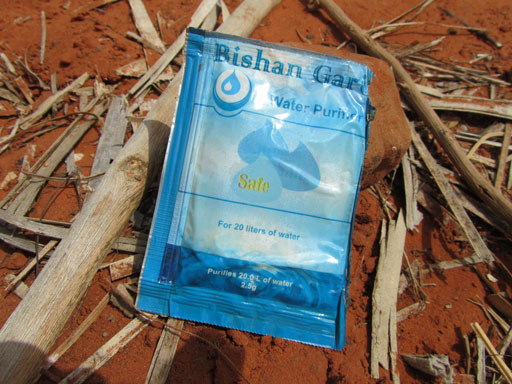1.5 WASH-related emergencies in urban areas
Emergency situations can arise as a result of disease outbreaks, natural disasters or man-made incidents. Contamination of water sources or distribution systems by disease-causing micro-organisms is a common cause of widespread disease outbreaks, leading to emergency in urban areas. Contamination at the source, or along the pipe network where there are leakages, can reach a large number of people very quickly. Piped-water systems are more likely to become contaminated when pipes are allowed to become empty, either as a result of the common practice of rationing water distribution or because the supply has dried up. This is because the pressure goes down in empty pipes, which can lead to contaminated water seeping in through defects in the pipe.
Floods are another common cause of emergency situations in urban areas. When extreme rainfall occurs, the run-off generated can exceed the capacity of the town’s drainage systems. Accumulated solid wastes may have already piled up in the canals, reducing their water carrying capacity. As a result, flood water can overflow into streets and houses and, as this happens, harmful bacteria living and reproducing in the waste are also transported to households.
In communities that practise open defecation, excreta may be carried with the flood water to contaminate the surrounding neighbourhood. The floods can also cause pit latrines and septic tanks to overflow causing further contamination. In addition, peri-urban and rural communities living downstream of the urban area are threatened because the flood eventually transports contaminants to these areas. The risk may be even higher here, especially if these communities depend on river water for their daily needs.
We cannot control natural incidents, such as rains and floods. However, we can control how we choose to live our lives in order to reduce health risks. Individuals and communities are responsible for stopping bad practices, such as open defecation, and adopting safe practices such as using latrines and handwashing. Communities are sometimes reluctant to use safe practices and, in urban areas, due to their mixed and diverse characteristics and a poor sense of belonging, this reluctance can be particularly pronounced.
The WASH service providers (e.g. water utilities), in collaboration with communities, must be alert to continuously ensure water safety from source to use. Routine activities to ensure this can include water source protection, distribution system inspection and maintenance, and monitoring the efficiency of water treatment facilities.
However, it is not always possible to ensure complete safety at source for technical or operational reasons. Therefore household water treatment (HWT) options, using chemicals or other alternatives, are widely recommended as a means to ensure water safety at point-of-use. Even if water arriving at users’ homes is contaminated, using household treatment options (also known as point-of-use treatment) should guarantee 100% safety if instructions are followed correctly. During emergencies these chemical treatments serve a very important and lifesaving role, and are usually distributed in tablet or powder forms to affected communities (Figure 1.8).

In such emergency situations, slum areas are particularly prone to being affected, owing to their lack of infrastructure. Vulnerable groups may be more seriously affected by the lack of WASH services than other users, so emergency interventions should provide inclusive solutions to assist vulnerable people such as children, the elderly and the disabled, alongside the plan for the wider community.
You will learn more about assessing and responding to emergencies in Study Session 14.
1.4 Youth and unemployment
